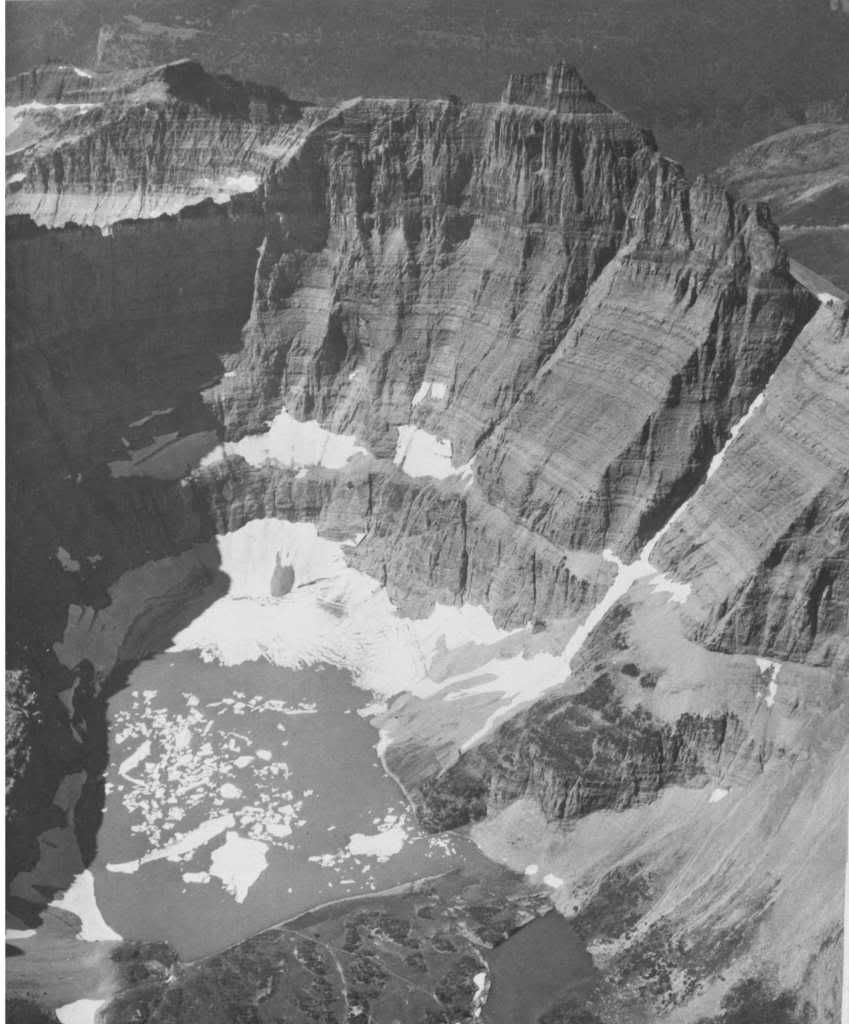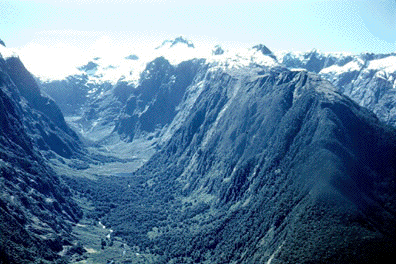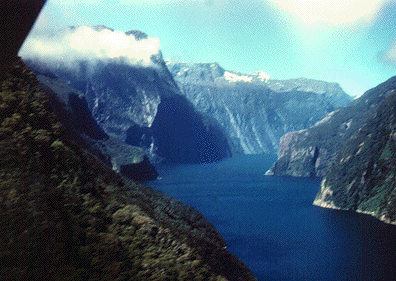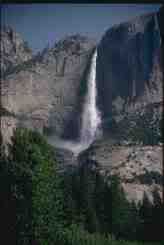Types of Glaciers
Glaciers can be found in both polar and more temperate climates. They are the most abundant in the polar regions, where it remains so cold that only a minor amount of water is lost through melting or evaporation. They can also be found in the highest mountains in temperate or even tropical latitudes where temperatures remain cold throughout the year, such as in the Pacific Northwest of the United States and Canada, Alaska, and South America. More snow and ice accumulate during the winter months in these mountain ranges than is lost as meltwater in the summer.
About one-tenth of the land surface on Earth is covered by glaciers today. Over 75 percent of this amount is on Antarctica, and 10 percent is on Greenland. The remainder occurs in mountain regions across the world. If the entire Antarctic ice sheet melted, it would raise the sea level about 60 meters (200 feet) and flood many cities in low-lying coastal areas around the world.
Ice sheets are associated with continental glaciation and cover large areas of a landmass (over tens of thousands of square kilometers). Ice sheets exist in Greenland and Antarctica. Ice caps are similar to ice sheets but are much smaller—they are usually found in the highest part of a mountain range, where the snow accumulation is the greatest. An ice cap can be a source for multiple valley glaciers.
Valley glaciers (or alpine glaciers) are masses of ice that are restricted to high mountain valleys. As they move downslope, they can connect with larger valley glaciers. The majority of alpine glaciation is the result of the repeated advance and retreat of valley glaciers. Valley glaciers are common in the mountain ranges of the United States and Canada.
Piedmont glaciers are the forwardmost extension of valley glaciers and form where the ice emerges at the front of the mountain range. The ice spreads out on the flat terrain to form a wide sheet at the mouth of the valley.
Glacial Erosion
Basal sliding erodes the rock surface underlying a glacier. Meltwater freezes in cracks, and pieces of bedrock are pried loose and incorporated into the ice (similar to frost wedging). These pieces of rock grind against each other and the bedrock underneath. The intensity of the grinding is proportional to the weight and pressure of the glacier.
Faceted rocks are those rocks along the base that are worn flat from erosion. The surfaces of the bedrock and the rock fragments are
polished just like rocks in a rock tumbler are. Rocks embedded in the ice scratch long, deep grooves in the bedrock called
striations, which indicate the direction of ice movement. The constant grinding of rocks in the glacier creates a fine-grained
rock powder that turns the meltwater white when released by ablation.
Other erosional features associated with glaciers include increased mass wasting from rapid downcutting of valley sides, frost wedging that creates rockfalls, and avalanches that contribute additional rock and soil material.
Glacial Landforms
The mass of ice at the top of a glacial valley ultimately forms a steep-sided, circular hollow called a
cirque. Mass wasting and frost wedging also contribute to the formation of a cirque.
A
bergschrund is a crevasse that forms where the glacier separates from the cirque wall and is commonly filled with rock fall debris

An advancing glacier scours out a series of depressions in the underlying bedrock, which later fill with water and become
rock-basin lakes, or tarns. Tarns are best developed in softer or highly fractured bedrock. Tarns are less common on smooth, hard bedrock surfaces because it is more difficult for the glacier to “grab hold” and break off pieces of rock.
 A horn
A horn is a sharply defined peak that has formed from erosional processes along the rim of the cirque. A steep ridge called an
arete commonly extends downward from a horn to separate two adjacent glacial valleys.

The most striking glacial erosional features are associated with alpine glaciation. In fact, rugged mountainous areas can be made even more spectacular by glacial action. Alpine glaciers transform V-shaped valleys made by streams into deeper
U-shaped valleys called glacial troughs—the ice is too massive to follow the stream bed and pushes right through, scouring out a U shape. The ice also erodes away the ends of any ridges along the valley walls. These eroded ridges are called
truncated spurs. The valleys of tributaries can also be truncated, forming
hanging valleys that are higher than the main valley and often marked by waterfalls.
 u shaped valley
u shaped valley
 fiords
fiords
 hanging valley, USA
hanging valley, USA
to be continued.